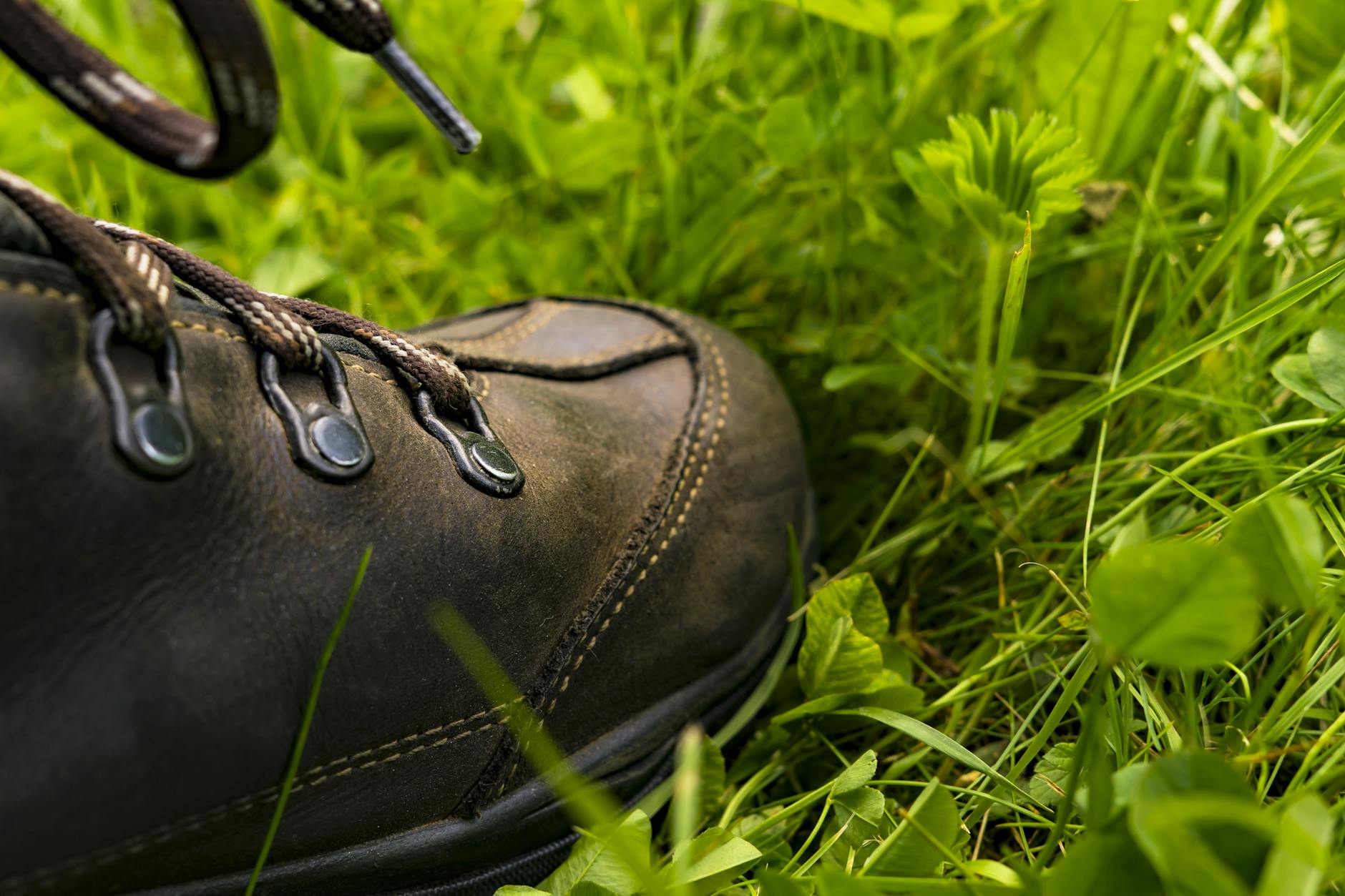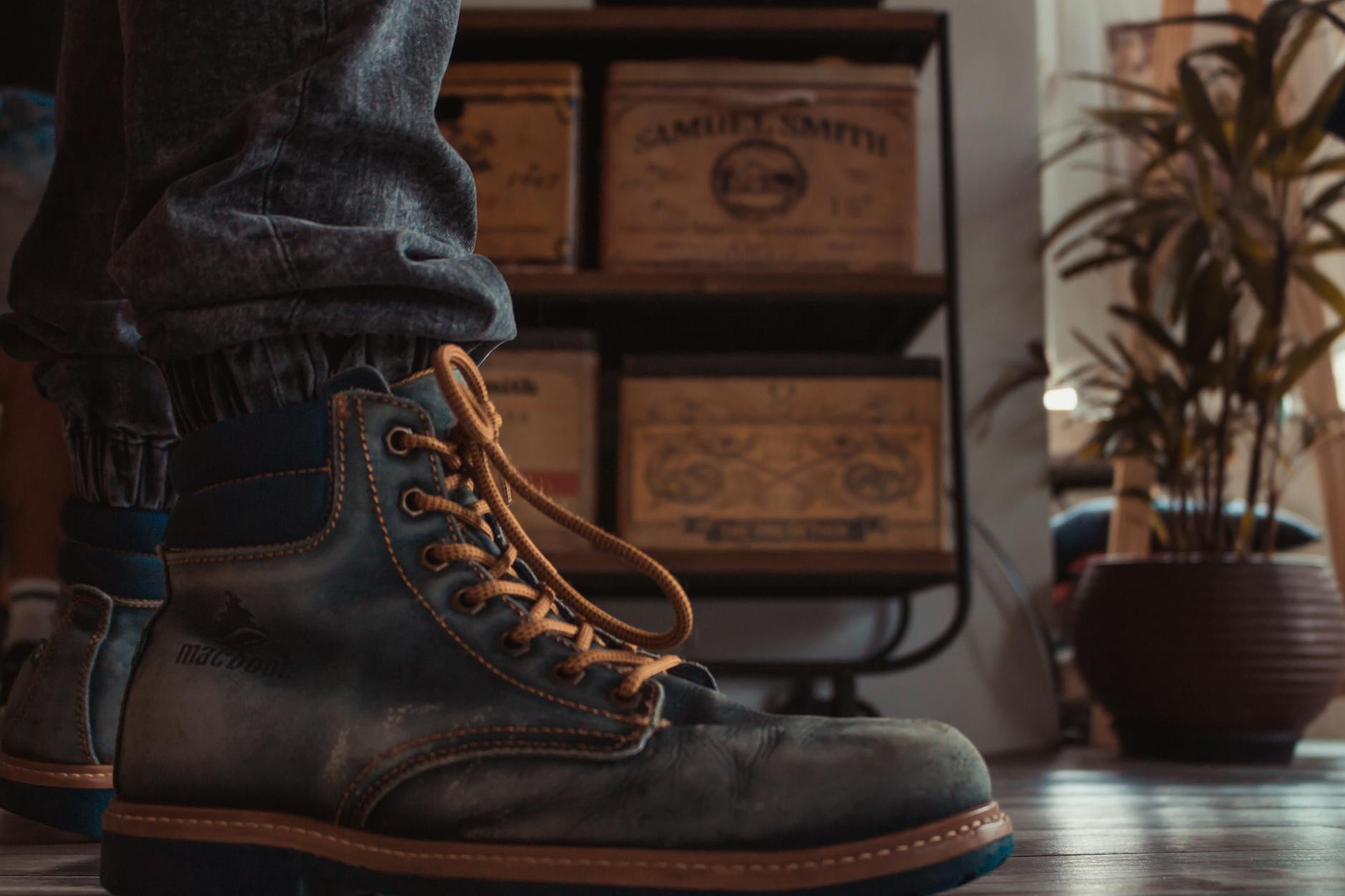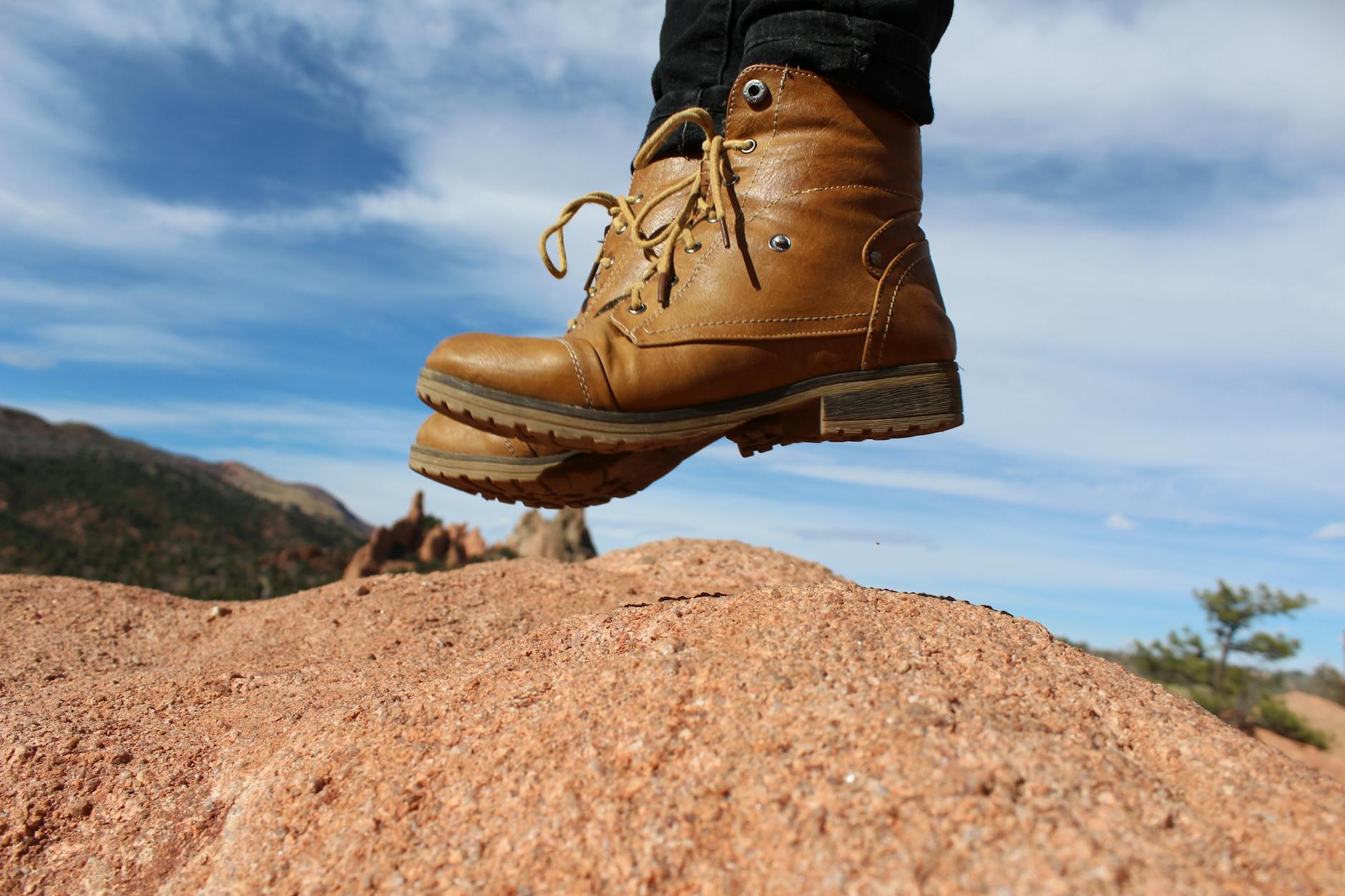

image source: Pexels
When it comes to our feet, there is nothing more annoying than a boot that doesn't fit right. Wearing an ill-fitting boot can lead to pinched toes, blisters, swelling, pain in the arch of the foot, plantar fasciitis, and other foot-related issues, such as ingrown toenails. In short, wearing the wrong size of boot is a problem. The problem begs a question: how do you know your boot size?
Surprisingly, most Americans don't wear the right size of sneaker let alone boots, which are constructed differently and are less forgiving when it comes to sizing. In fact, over 70 of both men and women are wearing the wrong size of shoe and ignoring all shoe-related pain as if wearing shoes is supposed to hurt. For work boots, withstanding that discomfort day in and day out is not an option. So, how do you know your boot size? Asking the question is a step in the right direction.
The easiest way to know which size work boot you should be buying is to take a peek at the size of your retired boots. If you are buying from the same brand and had no issues with the comfort of the boot, then you should be able to buy a new pair based on your old boot size.
However, if you are switching brands or have had issues with the comfort of your boot in the past, then it's probably best for you to rethink your boot size before you buy. The fact of the matter is that all brands use slightly different measurements on their shoe blue prints, and this, coupled with other factors, means that there is some variances in sizing between brands. This is especially true if you are ordering your work boots online. When ordering online, how do you know your boot size? It's a bit of a gamble.
As always, it's a good rule of thumb to take a peek at the sizing guides that are provided by online retailers. These guides are usually brand-specific, which should help you select the right size based on the actual measurements of your foot. However, these sizing guides only measure foot length, which can mean that they aren't a proper indicator of correct boot size. For people with high arches or wider feet, it might be necessary to take other measurements and buy bigger boots altogether. There are a few ways to measure up if you want to know your proper boot size.
How do you know your boot size? The most accurate way to know your size - regardless of brand - is to do the work and measure your foot. If you're in the market for work boots, then you want to make sure that your boot is going to be comfortable and well-fitting all day long. Frankly, an ill-fitting boot can be a safety concern in more ways than one. Knowing the exact measurements of your feet will go a long way.

image source: Pexels
Regardless of where you buy your boots, all American companies make their shoe measurement sizes based on the standard US Sizing Chart. The sizing chart is generally more accurate for shoes than it is for clothing, which is not as regulated. You can find a US Sizing Chart at online retailers and at brick-and-mortar retailers. You can also simply Google the US Sizing Chart. The sizing chart will help you pick out your boot based on approximate sizes, which can help you narrow your selection down to one or two sizes

image source: Pexels
You can find your base measurement in one of two ways: by looking at an old, comfortable pair of shoes or by actually measuring your foot. We recommend doing the work and getting an accurate measure of your foot. How do you know your boot size? You should get comfortable with a measuring tape pretty quick. This is the most accurate way to find your base measurement:
You might find that your base measurement is not a whole number, and that's okay. If your base measure is 1/4 to 1/2 inch larger than a whole size, then you will want to buy a larger pair of boots. If your base measure is 1/4 to 1/2 inch smaller than a whole size, then you will want to buy a smaller pair of boots. Half-size options in your boot selection might also be an option if those sizes are offered by the brand.

image source: Pexels
While some might not find that the width of their foot is a problem with regular shoes, boots are typically made with tougher materials that do not forgive the daily swelling of the foot. Boots can also be more narrow than other shoes simply based on the design of the toe box. Finding your foot width is a necessary step to making sure your foot has enough room.
You might notice that some sizing charts do not include foot width. However, many boot brands make boots in wide sizes. If you have noticed in the past that your boots feel really tight over the top of your foot, you might consider buying a boot in a wide size. The wide size of your boot is simply the standard size with a W next to it. For example: 10W.

image source: Pexels
How do you know your boot size? Sometimes it means knowing the arch of your foot. Most people have a regular arch to their foot, which means that they have no problems finding shoes that fit them. However, people with low arches or high arches run into comfort and sizing problems all the time. A quick way to know your foot arch is to wet your foot and then step on a dry piece of paper. Here's how to know your foot arch by studying the imprint:
Knowing the arch of your foot can sometimes determine the actual size of shoe you need to buy. Similarly to the width of your foot, standard sizing charts do not include arch height in measurement. If you have had discomfort over the top of your foot or difficulty zipping or tying shoes in the past and you happen to have a low or high arch based on foot imprint, then you might want to seriously consider a different boot size when you buy.
People with low arches have flatter feet that tend to be wider, which means a bigger boot size. People with high arches tend to need more room at the top of the boot, which also means a bigger boot size. Buying a single standard size or a half size higher than your base measurement is usually sufficient for arch issues.

image source: Pexels
Did you know that your feet aren't perfectly symmetrical? Actually, did you know that the right foot is always slightly larger than the left foot? Or how about the fact that the size of your foot when you wake up is not the size of your foot when you go to sleep? Because of human asymmetry and daily swelling thanks to gravity, the size of our feet is not always a reliable indicator of the size of shoe we actually need to buy. These are the two main reasons why so many Americans are wearing the wrong shoe size.
With that in mind, here are a few things to keep in mind when taking the measure of your foot:
No two feet and no two boots are the same. How do you know your boot size? Most of the time, finding an accurate boot size is just a matter of taking the time to make a few measurements. If you measure the base of your foot, you will be able to compare that measurement to a standard sizing chart. Knowing the width and the arch height of your foot is also a factor in finding the right boot size, since both of these variables mean that you might need a slightly larger boot.
It's also important to take the measurement of the right foot at the right time and under the right circumstances to get the most accurate measurement. If you keep all of these things in mind, you will be able to find the best fit for your work boot regardless of whether you buy online or in a store.
Our Purpose
Simple: Work Boot Critic was built to help people wisely choose work boots that fit comfortably and exceed work environment expectations